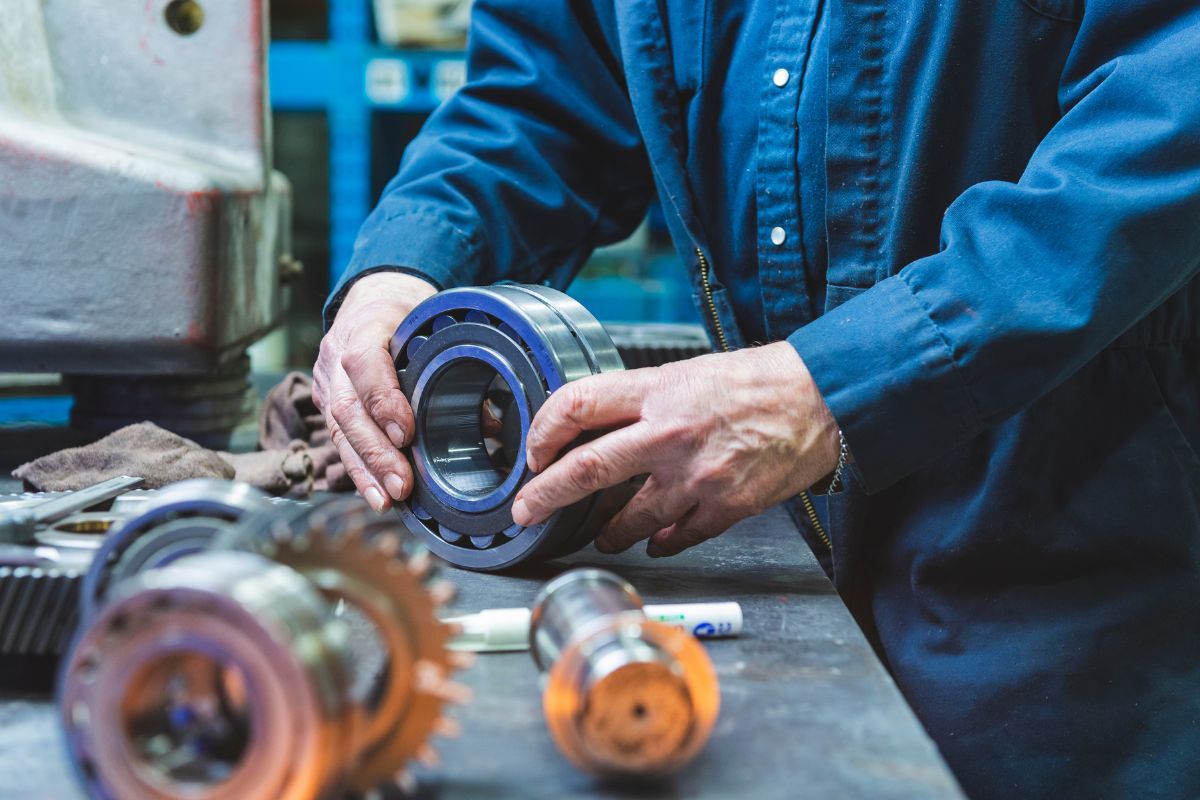Making a manufacturing workforce future-proof
Future-proofing manufacturing and its workforce
The manufacturing industry has been having a tough time of late the fallout of Brexit, rising prices, supply issues, and an economic downturn.
But is there still a great opportunity here for manufacturing? This might well be the time to look internally and begin a process of innovation and business futureproofing, setting themselves up on the front foot when it comes to a streamlined and nimble business. One of the challenges to change is often how the workforce actually manages that change. What should you do if your workforce is resistant?
Legacy thinking vs future potential – what are the challenges?
A multi-generational workforce poses plenty of challenges, and manufacturing has one of the highest percentages of workers aged 50+ in the UK economy. Alongside retail, health and education, these industries account for approximately half of all 50+ workers in the UK. Working lives are longer than ever, but with an ageing workforce and a struggle to attract new talent, manufacturing needs to look ahead – galvanizing legacy thinking and making way for the next generation and advancements and innovations in technology.
Simon Jacobson is Vice President of Gartner’s Supply Chain Research team. He specialises in how the merging of technology, people, process and data enables ‘Smart Manufacturing’, and he believes that ‘people are the new constraint.’ Dismantling and challenging ‘tribal thinking’, and supporting more established employees through the change journey, is 100 per cent possible if you equip leaders with the right tools.
How can manufacturing innovate through culture?
At Culture Consultancy, we‘ve worked with teams facing these challenges. We’ve witnessed how this tribal thinking can manifest itself: resistance to change, lack of motivation, reduced productivity, or a negative influence on the team. All of these behaviours will spell trouble if the leadership team are unable to recognise these as cultural issues, and support people through the change – and maybe even transform them into innovation agents.
People Vs Machines
A cause of anxiety for many employees is that digitisation will render human input worthless, and mass redundancies will follow. However, the fear that greater automation would mean fewer people has been proven unfounded. This is only further supported by the news that there are 95,000 manufacturing vacancies that need to be filled.
A recent study concluded that businesses that move quickly to adopt the use of robots tend to increase the number of employees, while industry job losses are more concentrated in firms that make this change more slowly. A 20 per cent increase in industrial robots in manufacturing from 2010 to 2015 led to a 3.2 per cent decline in industry-wide employment. And yet, for firms adopting robots during that period, employee hours worked rose by 10.9 per cent, and wages rose modestly as well.
Let’s picture this, then: a growing workforce, digitisation that is transforming systems and processes, a widening generational gap and a disparity between economic and educational backgrounds, plus a possible lack of diversity in your team. These are all complex workplace situations that are being played out right now in manufacturing businesses, large and small, globally and nationwide.
What’s more, these are all about organisational culture, and culture is a powerful differentiator in creating a successful business.
Manufacturing businesses are going to have to double down on culture if they are to efficiently utilise their more experienced workforce and their legacy thinking in harmony with future potential.
Future-proof through harmony
There are some key considerations any manufacturer needs to make before embarking on their futureproofing mission…
Knowledge transfer and upskilling – experienced to new, new to experienced, all to tech, and tech to all. How can get your experienced employees to share their deep knowledge and help upskill incoming talent and vice versa? How can you ensure a level playing field for knowledge and skills of the tech they will be using?
Employee value proposition (EVP) – if you want to retain and attract the right talent, the way you position your business, what you do, and the experience the employees will have is vital. High attrition rates can be an indication that your EVP isn’t in alignment with how your business actually is. This includes mission, vision, values, employee experience, rewards and benefits, ways of working, and opportunities for growth.
Our go-to methodology when working with clients is our 4 E’s Human Change Principles: Educate, Engage, Empower and Enable.
Employees can only engage with change if they are properly supported.
- Educate your people with the rationale behind actions
- Engage workers by ensuring they’re motivated
- Empower employees to take ownership
- Enable them to create the environment and structures you’re seeking.
Take them on the journey – bringing in fresh talent, upskilling your workforce, and adopting new tech is going to be somewhat of a transformation. Your business will as a result be more diverse, inclusive and innovative – so you need to bring people on the journey. A clear narrative of why changes are happening, what this means for individuals, and how they can play a part will get them bought in early and keep them engaged.
Are you struggling with ageing workforces, acquiring fresh talent, or innovation? Find out more about how we help manufacturers turn struggle into success.
